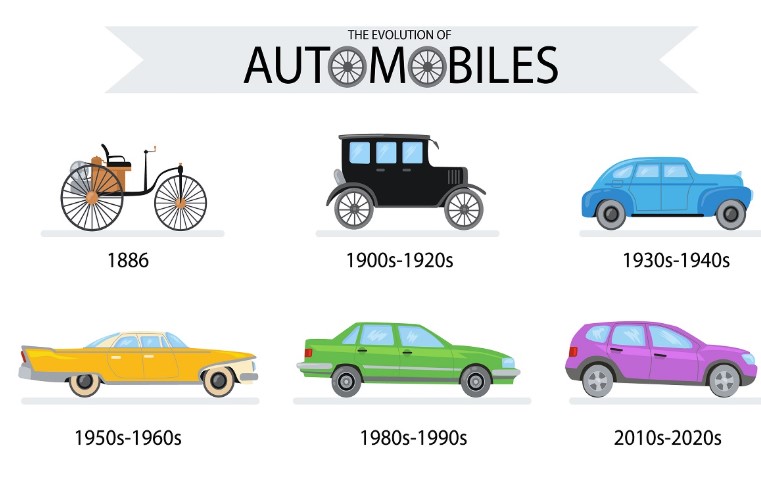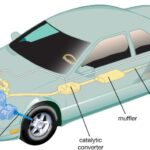automobile-who-created-the-first-car-nextgeninnovations.xyz-2025
Early Breakthroughs
The journey toward creating a self-moving vehicle started much earlier than the modern era of cars. In the late 18th century, Nicolas-Joseph Cugnot, a French engineer, created a steam-powered vehicle designed to transport artillery for military purposes. Though it was large and difficult to maneuver, it represented one of the earliest efforts to develop a self-propelled vehicle. Despite its impracticality for everyday use, Cugnot’s work was a crucial early step in the history of automotive innovation.
During the 19th century, inventors on both sides of the Atlantic experimented with various methods of propulsion, each contributing to the gradual evolution of the automobile. Steam power, which had driven Cugnot’s vehicle, remained a popular choice for some time. Inventors like Richard Trevithick in Britain and later, Americans like Sylvester H. Roper, built steam-powered vehicles that showcased the potential of this technology. However, these vehicles were often heavy and inefficient, highlighting the need for more practical propulsion methods.
Electric propulsion also saw significant experimentation during this period. Innovators like Thomas Davenport in the United States and Robert Anderson in Scotland worked on early electric car designs. By the late 19th century, electric cars were briefly popular, especially in urban areas where their quiet operation and lack of emissions were highly valued. However, limitations in battery technology and driving range ultimately hindered their widespread adoption at the time.

The internal combustion engine emerged as the most promising solution to the challenges posed by steam and electric propulsion. In the 1860s, Étienne Lenoir, a Belgian engineer, created one of the first practical internal combustion engines, which ran on coal gas. Lenoir’s engine was soon followed by more advanced designs from inventors like Nikolaus Otto, who developed the four-stroke engine in the 1870s. Otto’s engine, known for its efficiency and power, became the foundation for future automotive engines.
These early efforts by Cugnot, Trevithick, Davenport, Anderson, Lenoir, and Otto laid the essential groundwork for the subsequent breakthroughs in automotive technology. They demonstrated the potential of self-propelled vehicles and highlighted the need for continuous innovation in propulsion systems. Each inventor’s work contributed to the evolving understanding of how to build a practical, reliable automobile.
As the century progressed, the experimentation with steam, electric, and internal combustion engines set the stage for the development of the first true automobiles. These pioneering efforts were critical in advancing the technology that would eventually lead to the creation of cars that could be mass-produced and used in everyday life.
The Dawn of the Contemporary Automobile
Karl Benz’s Benz Patent-Motorwagen of 1886 is often hailed as a groundbreaking milestone in automotive history. Powered by an internal combustion engine, this vehicle marked a significant departure from earlier steam-powered models. The three-wheeled design featured a rear-mounted engine and could reach speeds of approximately 10 miles per hour, offering a practical and reliable means of personal transportation.
One of the key aspects that set the Benz Patent-Motorwagen apart was its advanced fuel system, which included a carburetor that mixed air with fuel to create a combustible mixture. The ignition system was also innovative, employing a battery and coil to produce a spark for engine combustion. These features contributed to the vehicle’s reliability and ease of use.
Another critical innovation was the water-cooled engine. This system helped prevent the engine from overheating, a common problem in earlier designs. By maintaining a consistent engine temperature, the water-cooled engine increased both the efficiency and longevity of the vehicle.
The Benz Patent-Motorwagen also incorporated several design elements that would become standard in later automobiles. It had a tubular steel frame, which provided structural integrity while keeping the vehicle relatively lightweight. The spoked wheels, similar to those used on bicycles, were another notable feature, contributing to the vehicle’s maneuverability and stability.
Benz’s invention was not just a technical achievement; it also demonstrated the potential for mass production. The practicality and reliability of the Benz Patent-Motorwagen attracted attention and investment, paving the way for the commercialization of automobiles. As a result, it became one of the first vehicles to be produced in multiple units, setting the stage for the development of the automotive industry.
Benz’s wife, Bertha Benz, played a crucial role in proving the vehicle’s practicality. In a famous journey from Mannheim to Pforzheim in 1888, she undertook one of the earliest long-distance trips by automobile. This trip not only showcased the vehicle’s capabilities but also helped identify areas for improvement, such as the need for better brake linings and more robust fuel lines.
The Benz Patent-Motorwagen’s success was a catalyst for further innovations in automotive technology. Its design and engineering principles influenced subsequent developments, leading to more advanced and efficient vehicles. Benz’s work laid the groundwork for the modern automobile, demonstrating that a self-propelled vehicle could be both practical and reliable for everyday use.
This period marked the beginning of the automotive era, characterized by rapid advancements and widespread adoption of cars. The Benz Patent-Motorwagen remains a symbol of this transformative time, representing a pivotal moment in the journey toward the contemporary automobile.
Other Trailblazers
While Karl Benz is often credited with creating the first automobile, other inventors also made crucial contributions to the development of the car. Gottlieb Daimler and Wilhelm Maybach were instrumental in advancing automotive technology. In 1885, Daimler and Maybach built the first high-speed, four-stroke engine, which they used to power a two-wheeled vehicle. This engine design became a precursor to the engines used in later automobiles.
Compared to Benz’s work, Daimler and Maybach’s contributions focused more on engine development and the transition from stationary engines to mobile applications. Their work on engine efficiency and performance significantly influenced the automotive industry and complemented Benz’s achievements.
Another key figure in the history of automotive development was Henry Ford. While he did not invent the automobile, Ford’s introduction of the assembly line in 1913 revolutionized car manufacturing. This innovation made it possible to produce cars on a large scale, significantly reducing the cost of production and making automobiles more affordable for the general public. Ford’s Model T, introduced in 1908, became one of the most popular and influential cars of its time, setting new standards for reliability and affordability.
Across the Atlantic, Émile Levassor and Armand Peugeot were making strides in France. Levassor, working with engineer René Panhard, was one of the first to build a car using a Daimler engine in 1891. This vehicle featured a front-mounted engine and a rear-wheel-drive layout, which became the standard configuration for most cars. Peugeot, on the other hand, was one of the earliest companies to begin mass-producing cars, further establishing the viability of the automobile as a means of transportation.
In the United States, Ransom Olds also played a pivotal role in the early automotive industry. Olds founded the Olds Motor Vehicle Company and developed the Oldsmobile Curved Dash, which became the first mass-produced car in America. Introduced in 1901, the Curved Dash was known for its simplicity and durability, helping to popularize the use of automobiles in the United States.
These inventors and innovators each contributed unique advancements that propelled the automotive industry forward. Their efforts in improving engine technology, manufacturing processes, and vehicle design laid the foundation for the modern automobile. By building on each other’s work and pushing the boundaries of what was possible, these trailblazers transformed the concept of personal transportation and set the stage for the automotive revolution that followed.
Societal Impact
The automobile’s introduction had far-reaching effects on society, revolutionizing how people lived and interacted with the world. Before cars became widespread, long-distance travel was time-consuming and often inaccessible for the average person. With the advent of automobiles, people could travel long distances quickly and efficiently, fundamentally altering daily routines and broadening horizons.
Increased mobility allowed individuals to explore new regions and experience different cultures more easily. Family vacations, weekend getaways, and spontaneous road trips became common activities, fostering a sense of adventure and discovery. The car also facilitated the growth of tourism, making previously remote locations accessible to the public.
Automobiles played a significant role in the economic landscape as well. The demand for cars spurred growth in various industries, including oil, rubber, steel, and glass. Service industries, such as motels, restaurants, and roadside attractions, flourished alongside the rise of car travel. Job opportunities expanded in manufacturing plants, dealerships, and repair shops, contributing to economic development and prosperity.
The automobile also influenced social dynamics, offering new forms of privacy and personal space. Young people, in particular, found freedom and independence through car ownership. This shift impacted social behaviors, such as dating and socializing, as cars provided a private setting away from parental supervision.
Urban planning underwent significant changes to accommodate the influx of automobiles. Cities expanded road networks, constructed highways, and developed extensive parking facilities. The layout of urban areas transformed, with new zoning laws and infrastructure designed to support the increasing number of vehicles. Public transportation systems also adapted, either by integrating with road networks or facing competition from the convenience of personal cars.
Suburbanization is another phenomenon closely tied to the automobile’s rise. With the ability to commute easily, people began moving to suburban areas, seeking larger homes and more open spaces while still working in urban centers. This shift led to the development of commuter culture and had lasting impacts on housing markets, school systems, and community structures.
Environmental considerations eventually emerged as a significant concern, driven by the widespread use of automobiles. Air pollution, noise pollution, and the impact on natural landscapes became critical issues. These concerns spurred the development of environmental regulations, the push for cleaner technologies, and the rise of electric and hybrid vehicles.
Culturally, the automobile became a symbol of status, freedom, and progress. Car design and branding played into consumer desires, with manufacturers creating models that appealed to various lifestyles and aspirations. The automobile’s presence in movies, literature, and advertising further cemented its role as an integral part of modern life.
Overall, the automobile’s impact on society is multi-faceted, touching nearly every aspect of daily life and continuing to evolve with technological advancements and shifting cultural values.
The Progression of Automobiles
The Progression of Automobiles
Automobiles have undergone significant transformations since their early days. Early models like the Benz Patent-Motorwagen laid the groundwork for future innovations, but the industry truly began to take off in the 20th century. With Henry Ford’s assembly line innovation, car manufacturing became more efficient, leading to a surge in car ownership and a shift in societal norms.
Safety advancements have been a focal point in the evolution of cars. Early vehicles lacked even basic safety features, but over time, seatbelts, airbags, and anti-lock braking systems became standard. Modern cars are now equipped with advanced safety technologies like electronic stability control, lane departure warnings, and automatic emergency braking, significantly reducing the risk of accidents.
Performance improvements have also been substantial. Initially, cars were slow and cumbersome, but technological advancements have led to faster, more reliable, and fuel-efficient vehicles. Innovations in engine design, aerodynamics, and materials science have all contributed to these enhancements, making modern cars more powerful yet more efficient.
In recent years, the focus has shifted towards sustainability. The development of electric and hybrid vehicles has been a major leap forward. Companies like Tesla have popularized electric cars, offering long-range models that compete with traditional gasoline-powered vehicles. Hybrid cars, which combine an internal combustion engine with an electric motor, offer improved fuel efficiency and lower emissions.

The advent of autonomous driving technology represents another significant progression. Self-driving cars, once a concept of science fiction, are becoming a reality. Companies like Waymo and Tesla are at the forefront of this innovation, aiming to make transportation safer and more efficient by reducing human error.
Connectivity is another area where modern automobiles have seen dramatic changes. Today’s cars are often equipped with advanced infotainment systems, GPS navigation, and internet connectivity, enhancing the driving experience. Features like remote diagnostics and over-the-air updates ensure that cars remain up-to-date with the latest software improvements.
The future of automobiles looks promising with ongoing research and development in alternative fuels, including hydrogen and biofuels, which aim to further reduce the environmental impact of transportation. The integration of smart technologies, such as vehicle-to-everything (V2X) communication, promises to make driving even safer and more efficient.
In summary, the progression of automobiles has been marked by continuous improvements in safety, performance, and sustainability, driven by technological advancements and a growing awareness of environmental concerns.



